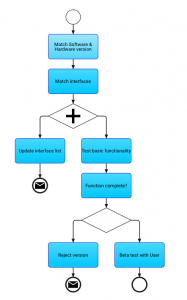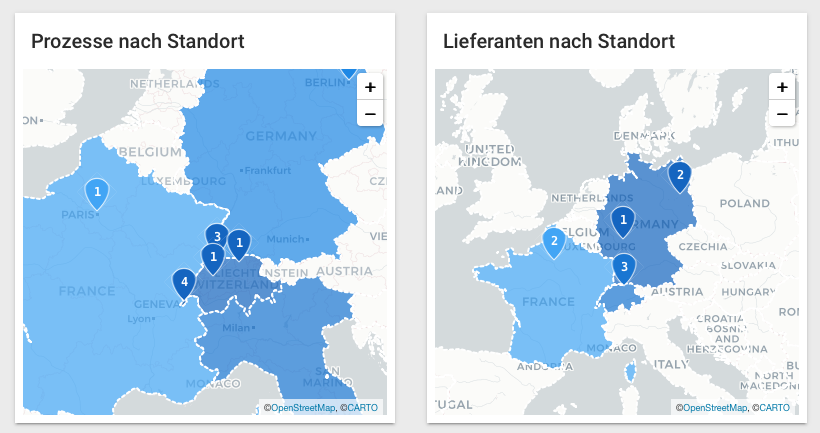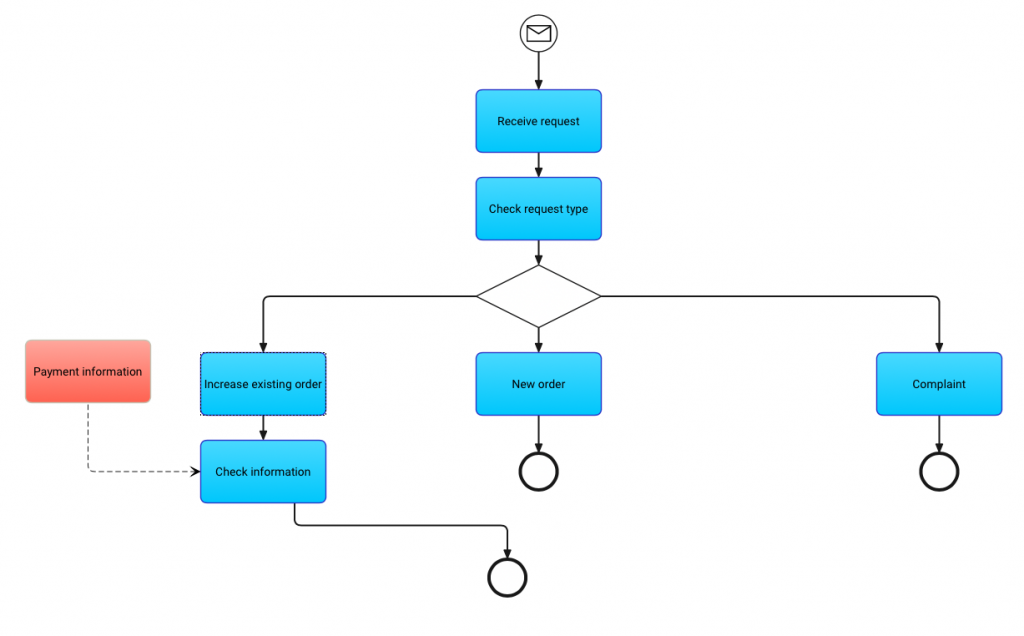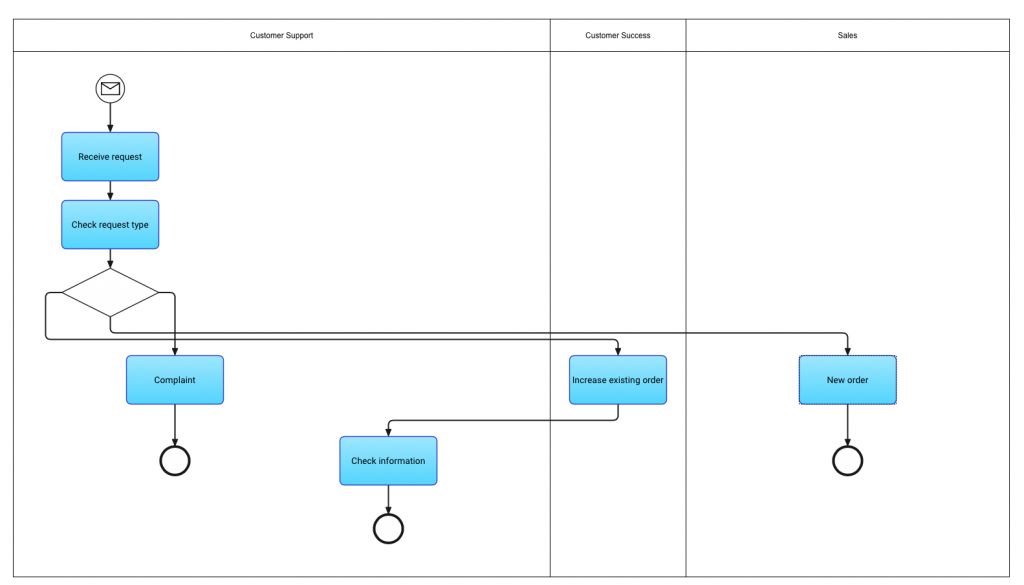Process management tools offer the opportunity of graphic process and information objects modelling (e.g. supporting assets). In state-of-the-art process management tools such as the TopEase® Process Manager, the processes are represented according to BPMN 2.0 notation, which significantly simplifies readability for third parties and auditors. In addition, various process representations such as swim lane representations can be selected according to responsibilities. Due to the technical database in the background, the roles are not only visible in the graphics, but RACI graphs can also be created for all roles for the respective processes. This ensures transparency in the processes as well as transparency for the process owners and process owners. The processes are released through electronic workflows, e.g. according to a four-eyes principle, the process management tool such as TopEase automatically informs the process employees concerned about the update via email. Using process management software, work instructions / standard operating procedures can be stored directly in the processes, eliminating the need for time-consuming approval procedures and manual document control.
Small and medium-sized companies in particular are faced with new challenges: digitization of products and establishment of the software development, integration and quality processes required for this, establishment of new qualifications in the area of software and hardware engineering and training of new employees, while at the same time securing existing business in an increasingly uncertain world: Since the beginning of the Covid-19 pandemic, there have been several delays and collapses in international supply chains and rapidly changing market conditions. In addition, there is an increasingly politically insecure global environment and the trend towards ecologically sustainable products and value chains. Due to these circumstances, we see companies that rely on digital process management tools with sustainable and significant competitive advantages:
Process management tools such as TopEase® Process Management enable a quick overview of all process partners and process objects involved. In the event of process and operational difficulties, not only the contact persons and other responsible persons can be identified, also alternative solutions can be modeled directly in the processes via new value chains. For example, fixed value chains and processes can be defined for disaster events, with their own transfer objects (information) and responsibilities.
n addition to individual process steps, processes and individual process objects can be displayed on the landscape level: The connected suppliers (left in gray) can be linked to supplier management via interfaces. The information flows and work results shown in red can be used for process management as well as for IT development.


Individual activity steps can be represented as process flows in the process management software. Here is the example of the “Internal Integration Services” from the graphic above, modeled in TopEase Process Management.
In this way, individual process objects can be graphically changed, or additional information can be added for each process object, e.g. in the event of delivery problems.
Graphic overviews such as the overview of processes by location or suppliers by location enable quick identification, e.g. in the event of delivery difficulties due to restricted border traffic.

Companies with several locations are often faced with the problem of consistent output quality: The quality of deliveries and services should also meet the requirements of the headquarters in external locations – on the other hand, customer inquiries should be processed in all locations with the same professionalism. To ensure consistent process quality, we recommend defining standard processes, which may vary due to local conditions. Compliance with the process specifications is guaranteed through company-wide controls, which are carried out as part of process management and are anchored in the process. Process management tools such as TopEase offer the option of integrating internal control systems (ICS) directly into process management.
Information on controls is shown in the graphic process diagrams (here: Payment Information in red). The execution of the controls as well as the evidence of the control results can be controlled via a connected ICS system.

The graphic analysis in the process management software enables process weaknesses to be identified. In our consulting projects we often encounter high process variances or complex process chains which, however, do not represent any differentiation for the core product. There are opportunities for optimization through:
The optimization of processes also brings advantages for other parts of the company: The complexity in the process-supporting IT systems is reduced, interfaces can be better defined and the overall workload is reduced. Particularly in established structures, the process transparency of the process management tools helps to significantly reduce the interface complexity and to increase the traceability of the processes.
Graphic process representations are easier for the employees to understand than complex processes described in text form. Additional documents and additional instructions can be stored in process management tools for each process activity or process element.
The use of standard representations such as the BPMN 2.0 (Business Process Model Notation) standard enables third parties to quickly familiarize themselves with the process representations. Deviations between “lived” and “documented” processes can thus be quickly identified and eliminated. Representations such as the swim lane form transparently show employees who are responsible for the process. Process management solutions thus also form the basis for operational quality management: The processes not only contain the process specifications and controls, but are also released via a workflow control in the process management software and all employees involved in the process are automatically informed of changes.

Companies that strive for certifications, e.g. ISO 9001 (quality management) or ISO 13485 (quality management medical devices) are faced with the challenge of documenting their processes and providing instructions for their employees. Word-based solutions are often used to start with, but these quickly become the limiting factor in growing companies: Approval processes can only be implemented with third-party tools, the possibilities for collaboration are limited, and document management offers little opportunity to navigate between processes or across processes Representation of responsibilities.
Process management tools offer a remedy here: linking of all relevant information, secure access for auditors, transparent display of controls and processes, automatic document control via information control and approval workflows. There is no significant effort to set up regulatory compliance to implement the requirements for the system, as systems such as TopEase are already used in the critical infrastructure and thus meet essential test criteria in the standard.
